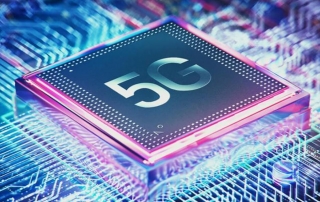After stunning the world with the 7nm Kirin 9000s 5G chipset that powers the Mate 60 collection, Huawei reportedly made some inside enhancements for its subsequent chipset, the Kirin 9010. Keep in mind, U.S. export guidelines put into place in 2020 are supposed to maintain Huawei from acquiring 5G software processors, and at first, the sanctions labored. The producer needed to receive a license from U.S. Customs in an effort to receive variations of the Snapdragon chips it used for the P50, Mate 50, and P60 flagship fashions. And people chips had been tweaked to stop them from working with 5G alerts.
Huawei supposedly has made some massive enhancements to the Kirin 9010 giving it a 12-core CPU cluster. However the incapability of SMIC, China’s largest foundry and the one which constructed the Kirin 9000s, to acquire cutting-edge lithography machines leaves one efficiency core on the Kirin 9010 30% slower than the Cortex-X2 massive core used on 2022’s Snapdragon 8+ Gen 1 when consuming the identical quantity of energy. An “X” put up by freelance coder
@negativeonehero (through
Wccftech) exhibits that the tipster ran the Kirin 9010 SoC over benchmark take a look at AndSPECMod.
Because the Snapdragon 8+ Gen 1 was produced by TSMC utilizing its 4nm course of node, a stage of superior manufacturing that SMIC can not come near but, the Qualcomm chip’s “efficiency per watt” exhibits that the Kirin 9010 consumes extra vitality, and delivers decrease efficiency than the older Snapdragon chipset. In comparison with the Cortex-A77 core on the Snapdragon 870, one efficiency core on the Kirin 9010 consumes 50% extra energy.
These efficiency gaps would appear to be as a result of incapability of SMIC to acquire the superior EUV lithography machines that etch circuitry patterns on silicon wafers. SMIC does personal deep ultraviolet lithography machines however these will not work to create any chip extra superior than 5nm and even that could be a stretch. Earlier this month, Huawei filed a patent for a low-tech lithography system that might assist it receive 5nm SoCs from SMIC. However until there’s a massive breakthrough, Huawei’s Kirin chips might not catch as much as these software processors (AP) powering rival flagship telephones.
Contemplating how widespread the Mate 60 line has been in China, at this level it does not appear that the hole in efficiency between Huawei’s Kirin chipsets and the Snapdragon chipsets has mattered to telephone consumers on this planet’s largest smartphone market. If Huawei is fortunate, by the point that it does matter, it would have found out the best way to create a lithography machine or method that does not violate the U.S. sanctions.
The Kirin 9010 is predicted to debut on the Huawei Mate 70 line anticipated to be launched later this yr.



